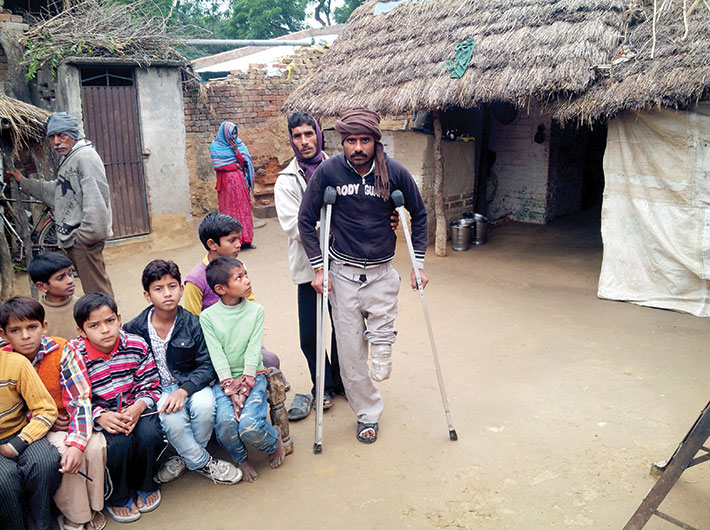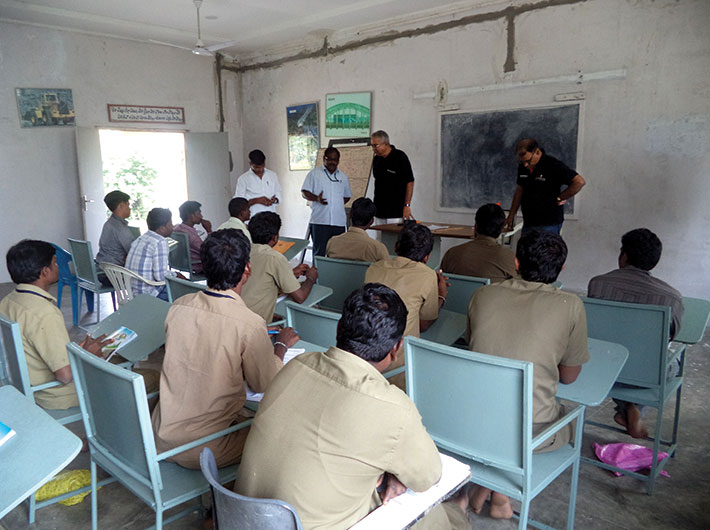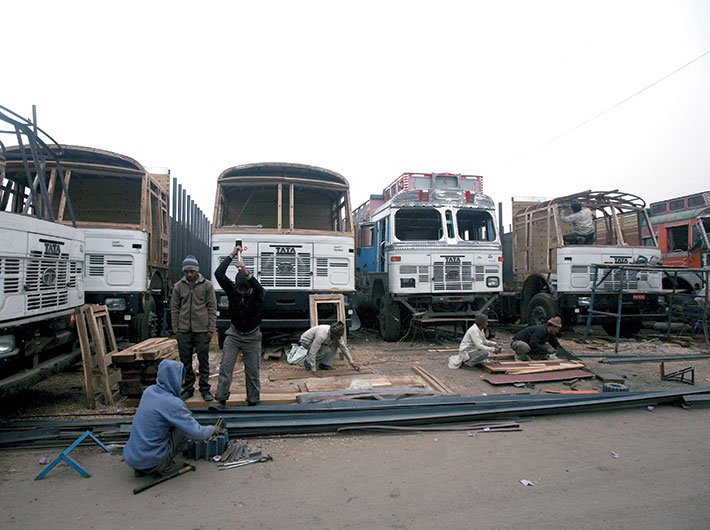Truck drivers are prime movers of economy, but they are not in the driver’s seat. They need social benefits, a less tenuous and less strenuous work regimen, and more family time
Sunil Chaturvedi is daunted by the mismatch between the demand and supply of drivers in all categories. The chief executive officer of the newly created Automotive Skill Development Council (ASDC), he is intimately aware of the challenge. The council is the creation of the central department of heavy industries, the society of Indian automobile manufacturers (SIAM), the automotive component manufacturers association (ACMA), and the federation of automotive dealers (FADA).
While the vehicle population is growing non-stop, the number of qualified men to drive them is not increasing. Truly a piquant situation for all – just not the stakeholders mentioned above, but the entire nation. Without capable drivers, who will convert India’s blueprint for development into a reality? In this age of rampant outsourcing, how can businesses – read manufacturers of anything and everything – move raw materials from multiple locations to assembly line or manufacturing site? Subsequently, how will they push the finished items to the market shelves across the country?
Chaturvedi estimates that India is about two million drivers short of the demand. He hastens to add: “It is an approximation. It may be more, but it definitely is not less than that.” The lack of accurate numbers is not difficult to understand. Nobody has bothered to collate the numbers – be it the government at the state where sale, purchase and registration of vehicles happens, or the truckers lobby, such as the all India motor transport congress (AIMTC).
ALSO READ: A high-risk job, no safety net
 Chittranjan Dass is the editor of the ‘SAARC Journal of Transport’; he was the secretary-general of AIMTC for several decades. Dass says the ministry of road transport and highways is responsible for this void: “The government never gave it a thought. They were actually well positioned to gather this data, but they demurred. The numbers bandied about in the media is pure hogwash.” In more developed countries, it is easy to get numbers that accurately reflect ground realities.
Chittranjan Dass is the editor of the ‘SAARC Journal of Transport’; he was the secretary-general of AIMTC for several decades. Dass says the ministry of road transport and highways is responsible for this void: “The government never gave it a thought. They were actually well positioned to gather this data, but they demurred. The numbers bandied about in the media is pure hogwash.” In more developed countries, it is easy to get numbers that accurately reflect ground realities.
If there is such a dramatic shortage of drivers, why isn’t truck driving a more popular career option? Long-haul driving demands a driver to be away from home for long stretches. In India, it is particularly long, given the conditions of our highways and the high-handed manner of governmental control, with multiple check-posts, RTO harassment at every state border, as also at the district level. As against a daily range of 800-900 km overseas – even in Malaysia – an Indian truck driver is unable to cover more than 350 km in any 24-hour cycle. The distance of about 2,400 km between Gurgaon and Chennai needs more than a week.
Then comes the challenge of the return trip, or as it is called in transport lingo, backhaul. A fleet owner would prefer his vehicle and driver to stay put at the destination reached for the return load. Otherwise, it does not make economic sense to own and run a fleet. Indian fleet owners, for the most part, are small and marginal players who own not more than one to five vehicles. For them, affording a branch at every destination to arrange backhaul is next to impossible. Hence, the dependence on transporters or brokers who for a fee provide the return load. A round trip of Gurgaon-Chennai-Gurgaon would mean a home-away time of 20 days, if not more. Drivers typically come from hinterland – Bihar, Chhattisgarh, Jharkhand, Haryana, Punjab and Rajasthan – in all age groups due to lack of education and job opportunities. Returning home after each single trip is impossible.
Other features of long-haul truck driving include poor living and working conditions. Most drivers do not have a regular, fixed salary. There are no social benefits like provident fund, employees state insurance for healthcare, or bonuses. Drivers are paid per kilometre driven. More one drives, higher the pay. There are no restrooms on the highways, despite legal sanction for such facilities to be built up as wayside amenities every 300 km. All on paper, nothing on the ground. Neither the government nor fleet owners nor the trade bodies such as AIMTC are serious about basic human infrastructure for drivers. Drivers are compelled to sleep in unhygienic and unventilated driver cabins. This multiplies driver fatigue, a major cause for highway accidents.
In the absence of wayside amenities on highways, truck drivers have no option but to eat at equally unhygienic roadside eateries – dhabas. Then the cruel fate of no access to toilet facilities. Every single day, they walk into the bushes or open space on waking up anywhere on the highways for
open defecation. Add the highway heist or robberies where at gun or knife point, they are looted of their cash and the cargo they ferry too. (En route expenses cannot be dispensed with a credit card.)
ALSO READ: Better and more training schools, please
 What if they meet with an accident, losing a limb or life? What will be the fate of their large families living in faraway villages with little educational background or skills to survive in the aftermath of the death of their sole breadwinner? Zilch. Few fleet owners would lift their little finger to ameliorate the bereaved family (see box: All risk and no help from anybody).
What if they meet with an accident, losing a limb or life? What will be the fate of their large families living in faraway villages with little educational background or skills to survive in the aftermath of the death of their sole breadwinner? Zilch. Few fleet owners would lift their little finger to ameliorate the bereaved family (see box: All risk and no help from anybody).
Social reasons also explain the looming shortage of drivers. No parents would prefer to have their daughter marry a truck driver because of a slew of negativities attached to the profession. Primarily, the groom-driver would be most of the time away from family. He is susceptible to go to prostitutes, hence at a greater risk of HIV-AIDS and drug abuse. It is no secret that long-haul truck drivers are one of the biggest carriers of HIV-AIDS, and that they do not appreciate the benefits of safe sex with the usage of condoms. “Do horses wear rubber when they have sex? Do elephants use condom when they have sex? They do it naturally. So do we. Why do (you) want us to use rubber?” is what I was told during an interaction with a bunch of drivers in 2010 on the periphery of the Tata Motors plant in Chinchwad, near Pune.
Drug abuse is very common, with narcotics easily available at highway dhabas for a pittance. All kinds of drugs are used to fight fatigue and boredom. And also to meet delivery deadlines after having skipped en route. One of the practices driver adhere to is to visit their families living in remote villages if it falls on their journey route. A day-night spent at their home is a day-night lost in scheduled travelling time. To make up for that lost time, they want to drive quickly. In the absence of strict implementation of the two-driver format – fleet owners complain they can’t get a single driver, how are they supposed to get two – there is a limit to their physical capability for strenuous truck driving. Alcohol or drug uptake, they believe, help them overcome physical limitations and drive for extraordinary durations. This often results in accidents and deaths.
The pathetic conditions of a truck driver’s life needs to be changed. A better environment for work, social benefits and a less tenuous work regimen, more family time. If these are introduced, drivers will regain self-esteem. The stigma attached to truck driving will vanish then, bestowing a little dignity, a little respectability on this profession that provides essential services to society. For the driving of trucks is as important as other essential services, like those of doctors in a hospital or pilots in airplanes. It is a public service.
Almost all professions require a certain amount of training and knowledge gathering, as also a validation process.Truck driving in India is an exception. India lacks proper driving schools. Then, how do you explain the driving of millions of trucks carrying food grain, oil, milk, steel, cement, etc? Who drives them? Drivers, of course, but they are not properly trained, certified or validated. Driving licences are sold for a price. Corrupt practices flourish, thus enabling possibly even a visually impaired or physically handicapped person to procure a heavy commercial vehicle licence.
Where does the existing lot of truck drivers learn? From their elders, neighbours, friends who also happen to be truck drivers. Self-taught, half way. They themselves would have learnt from their friends who again had never sat in a classroom, nor studied the basics of driving properly. The government has woken up at last, as proved in the creation of ASDC under the National Skill Development Agency.
Kumar is the author of ‘10,000 KM on Indian Highways’, ‘Naked Banana!’ and ‘An Affair With Indian Highways’. He is also the founder-chair of KRK Foundation, a trust focused on improving the working and living conditions of truck drivers and their families. He is reachable at ramesh@krkfoundation.org.
(The story appeared in January 16-31, 2015, issue)
